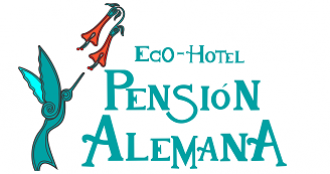Cusco is fascinating destination where you can find history, nature, adventure, art, gastronomy, traditional customs and cosmopolitan life
Cusco is Peru's main tourist destination and one of the most important ones in South America. It is also the capital of the region, which bears the same name. Cusco is an important trade and economic center in southern Peru, as well as a duty venue for arrivals and departures (The country's second biggest airport, bus station with international and domestic routes and point of departure of important rail roads). This historic city has a population of around half a million inhabitants. While Lima is the political and economic capital of Peru, Cusco is the historical one. The former capital of the Inca Empire is fascinating because it is a destination where you can find history, nature, adventure, art, gastronomy, traditions and cosmopolitan life
The city radiates a special energy and a strong mythic spirit, due to a fascinating mix of historic heritage as well as the presence of still existing cultures, such as the Incas, the Spanish colonial, the Andean indigenous or the Mestizo one. Nevertheless Inca & Spanish colonial culture have left an incredible heritage of architecture and art, strongly present in the Historic Center and the area around the city. These cultures can be seen within an environment of cosmopolitan life where locals mix with the visitors and residents from all over the world. All these make Cusco a perfect place, with countless tourist attractions, and also a place to enjoy this unique and special environment. Because of the historic importance and its enormous amount of historic monuments, Cusco is often called the "Rome of America" - no wonder why. It was the capital of the Inca Empire from as early as the thirteenth century and since then it has been continuously inhabited. Also in Inca times Cusco was the most important city in South America for being the main cultural and religious center with a great flow of pilgrims from all over the empire. This empire covered an enormous area of 4,500 km (2,800 Miles) along the Andean mountains, a territory which included large parts of the present countries of Colombia, Ecuador, Peru, Bolivia, Chile and Argentina. The Inca empire embraced and integrated an enormous geographical, ecological, ethnical and cultural diversity.
In 1534 took the Spanish founding of the city of Cusco place, locating the main square (Plaza de Armas) at the same place were it already had been in Inca times as “Huacaypata”, being it by then also the physical core point of the empire. From on the Spanish invasion began a process of cultural miscegenation, which until our days it expressed in an architectural mixture of Inca style and colonial baroque style, present throughout the historical center of the city. Examples of this are the: Casa Garcilaso, Casa Concha and the Admirals Palace, also churches such as the cathedral and the Compañía and the monasteries (Santa Catalina, Santo Domingo and La Merced) as well as the traditional neighborhoods such as the one of San Blas with its narrow cobbled streets, balconies, craft workshops, cozy hotels and cafés. In all these places can be seen stunning and lush testimonies of colonial art, expressed especially in the famous carvings and paintings from the Cusco School. The Spaniards constructed their buildings on Inca buildings because of their solidity and utility for their purposes. That is why within in colonial Cusco there are still many testimonies of buildings, squares and streets from the Inca times, which express an enormous significance of beauty and technological progress. Among them are important to mention the Plaza de Armas (Hucaypata), the streets Hatun Rumiyoq, Siete Culebras and Loreto as well as the Qoricancha temple. The Qoricancha temple was the most important sanctuary in Inca times. Nearby, in the immediate suburbs, can be seen other architectural testimonies, such as the enormous and singular Sacsayhuamán, Tambomachay and Qenco. These fascinating monuments where also important spiritual and ceremonial centers. In the historic city canter you can also find a number of selected museums, which show the life and art of pre-hispanic times as well as religious colonial art.
In 1534 the Spanish refunded the City of Cusco, locating the main square (Plaza de Armas) at the same place were the “Huacaypata” had been. In Inca times this was regarded as the physical core of the empire and as such the center of the universe. Since the Spanish invasion a process of cultural miscegenation began , which we can see in an architectural mixture of the traditional Inca style and colonial baroque, present throughout the historical center of the city. Examples of this are: Casa Garcilaso, Casa Concha and the Admirals Palace, also churches such as the cathedral ,the Compañía and the monasteries (Santa Catalina, Santo Domingo and La Merced) as well as the traditional neighborhoods such as the one of San Blas with its narrow cobbled streets, balconies, craft workshops, cozy hotels and cafés. In all these places we can see stunning and lush testimonies of colonial art, expressed especially in the famous carvings and paintings from the Cusco School. The Spaniards constructed their buildings on top of the Inca buildings because of their solidity and utility for their purposes. That is why within colonial Cusco there are still many testimonies of buildings, squares and streets from the Inca times, which express an enormous significance of beauty and technological progress. The most important ones to mention are the Plaza de Armas (Huacaypata), the streets of Hatun Rumiyoq, Siete Culebras and Loreto as well as the Qoricancha temple. The Qoricancha temple was the most important sanctuary and religious site in Inca times. Nearby, just outside the city, we can find the enormous and breathtaking Sacsayhuamán, Tambomachay and Qenco. These fascinating monuments where also important spiritual and ceremonial centers. In the historic city centre there are a number of prestigious museums, which show the life and art of pre-hispanic times as well as religious colonial art.
Cusco is home to numerous ceremonies and imperial festivals such as “Inti Raymi” also known as “the Sun Fest” which always takes place on June 24th on the esplanade of Sacsayhuaman. “Inti Raymi” as well as the catholic ceremonies like “Corpus Christi”, have a strong influence of the ancestral indigenous spirituality and are held throughout the year. This clearly shows that Cusco hasn’t lost its strong, spiritual and religious character, which it had in Inca times as the sacred center of the Empire. Of course, this ancient influence of pre-hispanic spirituality is reflected in today’s Catholic religious practices as well.
For all the above reasons Cusco is a destination that requires to schedule enough time in order to discover, contemplate and enjoy this wonderful place. Spending a short afternoon in Cusco and only visit Machu Picchu (located just 4 hours from the city) would be like visiting Pompeii without having seen Rome.


















